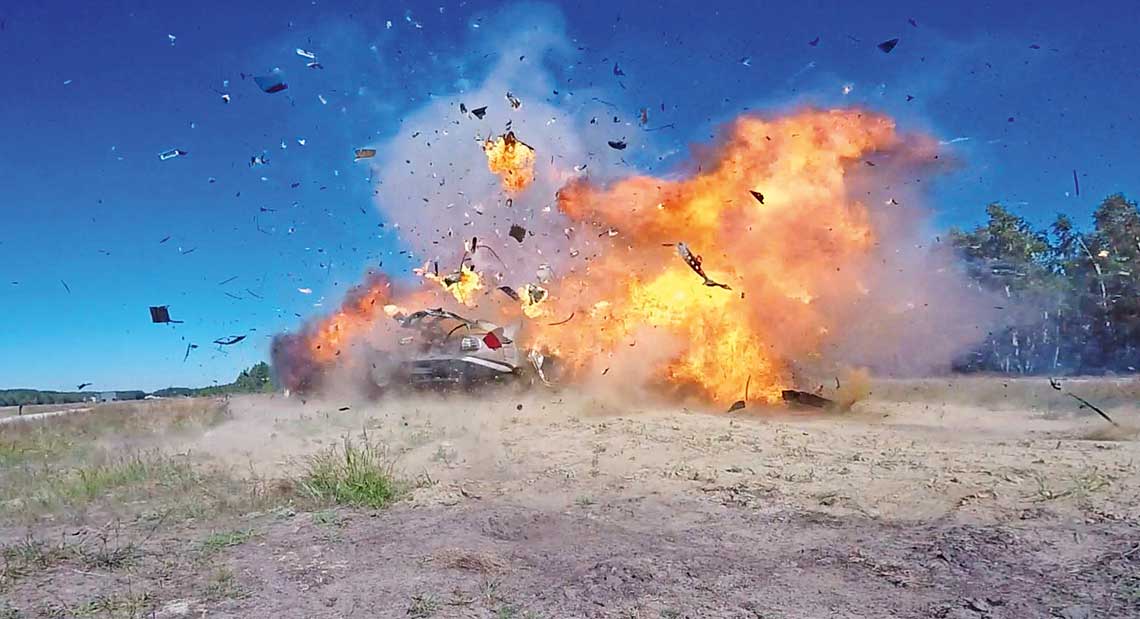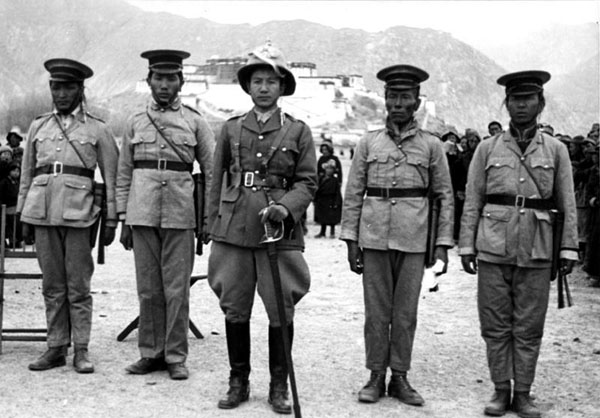
Heads from Zelonka

Influence of detonation of thermobaric head GTB-1 FAE on a passenger car.
The Military Institute of Weapons Technology from Zielonka, previously known for many interesting research in the field of artillery and rocket technology, as well as many types of ammunition, has also specialized in research related to combat systems of unmanned aerial vehicles for several years.
In a short time, in addition to the DragonFly unmanned aerial vehicle developed and put into production, the institute team also managed to prepare two families of warheads for unmanned aerial vehicles (UBSP). Fully domestic production, operational reliability, guarantee of safe operation, availability and attractive price are their undeniable advantages.
Arm a mini-class UAV
The GX-1 series warhead family was developed at the Military Institute of Weapons Technology (VITU) based on self-financed research and development work begun in August 2015 and completed in June 2017. As part of the work, several types warheads weighing 1,4 kg for various purposes, each in a variant with a conventional camera, for use during the day and a thermal imaging camera, useful at night and in worse weather conditions.
And so the high-explosive GO-1 HE (High Explosive, with a daylight camera) and its version GO-1 HE IR (High Explosive InfraRed, with a thermal imaging camera) are designed to deal with manpower, lightly armored vehicles and against machine gun nests. The mass of the crushing charge is 0,55 kg, the estimated fire zone is about 30 m.
In turn, to fight tanks (from the upper hemisphere) and armored fighting vehicles and their crews. The mass of its crushing charge is 1 kg, and armor penetration is more than 1 mm of rolled armor steel (RBS).
Also, a thermobaric head in the performance of GTB-1 FAE (TVV, with a daylight camera) and GTB-1 FAE IR (TVV Infrared, with a thermal imaging camera), designed to eliminate lightly armored vehicles, shelters and fortified nests with fire weapons, it can also effectively destroy infrastructure in the field, such as radar stations or rocket launchers. The mass of the crushing load is 0,6 kg, and the efficiency is estimated at about 10 m.
Simulators GO-1 HE-TP (High Explosive Target Practice, with daylight camera) and GO-1 HE-TP IR (High Explosive Target Practice InfraRed, with thermal imaging camera) were also prepared. They are designed as training equipment for practical tasks by BBSP operators. Compared to the warhead, they have a reduced combat load (up to 20 g in total), the purpose of which is mainly to visualize the effect of hitting a target.
The range also includes the GO-1 HE-TR (High Explosive Training, with daylight camera) and the GO-1 HE-TR IR (High Explosive Training InfraRed, with thermal imaging camera). They don't have an ounce of explosives. Their goal is to train BBSP operators in foreground surveillance, learning to aim and target, and school fire missions. Like the rest, their weight is 1,4 kg.
The undeniable advantage of these warheads is the ability to use them with almost any carrier (fixed or rotary-wing) of the mini class, of course, subject to the provisions of the technical documentation, including the requirements for mechanical, electrical and IT integration that have met. Currently, the heads are already part of the Warmate system manufactured by WB Electronics SA from Ożarów-Mazowiecki and the DragonFly unmanned aerial vehicle developed in Zielonka and produced under license at the Lotnicze Military Plant No. 2 in Bydgoszcz.
However, the Institute does not stop there. As part of the next development work in Zelenka, work is planned to increase the capabilities of the GK-1 HEAT cumulative fragmentation warhead. The new cumulative installation should provide penetration of 300÷350 mm RHA with the same weight of the head (i.e. no more than 1,4 kg). A slightly more complicated topic is the improvement of the parameters of the high-explosive fragmentation head GO-1 and the thermobaric GTB-1 FAE. It is possible, but the gain in the form of efficiency will be negligible, which would be an economically unjustified plan. The limitation here is the mass of the probe, which should not exceed 1400 g. An increase in the mass of the probe would mean the need to develop another, larger carrier for them.
Proven effectiveness
After the formal completion of the research work, quite quickly, in July 2017, WITU signed an agreement with Bydgoskie Zakłady Elektromechaniczne “BELMA” SA for the licensed production of a series of heads. The heads are completely produced in Poland, and all the solutions and technologies used in them are at the disposal of the designer and manufacturer.
The agreement resulted in acceptance tests of GX-1 warheads for BBSP, conducted by BZE "BELMA" A.O. and the Military Institute of Weapons Technology. A batch of products was manufactured in accordance with the technical specifications that served as the basis for the receipt of weapons and military equipment (AME) for the Ministry of Defense, under a contract for the supply of the Warmate system dated November 20, 2017. At the first stage, the factory tests carried out by the company from Bydgoszcz consisted of checking the resistance and durability of the product to environmental influences and mechanical stress. The second stage - field tests aimed at physical verification of operational and combat parameters, as well as tactical and technical combat equipment, was carried out at VITU. It was supervised by specialists from the 15th regional military representation. Two types of warheads were tested: high-explosive fragmentation GO-1 and cumulative fragmentation cumulative fragmentation GK-1. The tests were carried out at the training grounds in Zelonka and Novaya Demba.
Factory tests have confirmed the resistance of the tested heads to the environment, i.e. high and low ambient temperature, ambient temperature cycling, sinusoidal oscillation, 0,75 m drop, defense-grade shipping resistance. Impact studies have also been positive. At the next stage, operational tests were carried out at the VITU military training ground in Zelonka, during which the effective radius of destruction of manpower for the high-explosive warhead GO-1 and armor penetration for the HEAT warhead GK-1 were measured. In both cases, it turned out that the declared parameters were significantly exceeded. For OF GO-1, the required radius of damage to a person was determined at 10 m, while in fact it was 30 m. For the cumulative warhead of the GK-1, the required penetration parameter was 180 mm RHA, and during the tests the result was 220 mm RHA.
An interesting fact of the product certification process was the testing of a newly developed thermobaric head GTB-1 FAE, carried out at VITU, the effectiveness of which was tested using a target in the form of a car.
It is worth emphasizing that the tests were also carried out outside our country. This was due to an export order to two countries for Warmate unmanned aerial vehicles equipped with Zelonka-designed GX-1 family warheads.

